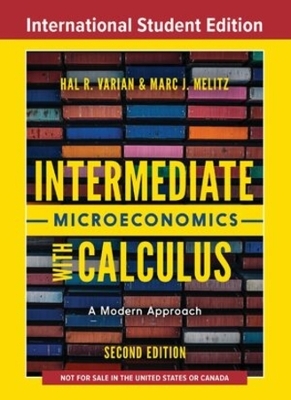
Basic Analysis
CRC Press
978-1-138-05514-8 (ISBN)
- Titel z.Zt. nicht lieferbar
- Versandkostenfrei
- Auch auf Rechnung
- Artikel merken
The first volume is designed for students who have completed the usual calculus and ordinary differential equation sequence and a basic course in linear algebra. This is a critical course in the use of abstraction, but is just first volume in a sequence of courses which prepare students to become practicing scientists.
The second volume focuses on differentiation in n-dimensions and important concepts about mappings between finite dimensional Euclidean spaces, such as the inverse and implicit function theorem and change of variable formulae for multidimensional integration. These important topics provide background in important applied and theoretical areas which are no longer covered in mathematical science curricula. Although it follows on from the preceding volume, this is a self-contained book, accessible to undergraduates with a standard course in undergraduate analysis.
The third volume is intended as a first course in abstract linear analysis. This textbook covers metric spaces, normed linear spaces and inner product spaces, along with many other deeper abstract ideas such a completeness, operators and dual spaces. These topics act as an important tool in the development of a mathematically trained scientist.
The fourth volume introduces students to concepts from measure theory and continues their training in the abstract way of looking at the world. This is a most important skill to have when your life's work will involve quantitative modeling to gain insight into the real world. This text generalizes the notion of integration to a very abstract setting in a variety of ways. We generalize the notion of the length of an interval to the measure of a set and learn how to construct the usual ideas from integration using measures. We discuss carefully the many notions of convergence that measure theory provides.
The final volume introduces graduate students in science with concepts from topology and functional analysis, both linear and nonlinear. It is the fifth book in a series designed to train interested readers how to think properly using mathematical abstractions, and how to use the tools of mathematical analysis in applications.
It is important to realize that the most difficult part of applying mathematical reasoning to a new problem domain is choosing the underlying mathematical framework to use on the problem. Once that choice is made, we have many tools we can use to solve the problem. However, a different choice would open up avenues of analysis from a different, perhaps more productive perspective. In this volume, the nature of these critical choices is discussed using applications involving the immune system and cognition.
Features:
Can be used as a supplementary text for anyone whose work requires that they begin to assimilate more abstract mathematical concepts as part of their professional growth
Function as a traditional textbook as well as a resource for self-study
Suitable for mathematics students and for those in other disciplines such as biology, physics, and economics and others requiring a careful and solid grounding in the use of abstraction in problem solving
Emphasizes learning how to understand the consequences of the underlying assumptions used in building a model
Regularly uses computation tools to help understand abstract concepts.
James K. Peterson is an Emeritus Professor at the School of Mathematical and Statistical Sciences, Clemson University. He tries hard to build interesting models of complex phenomena using a blend of mathematics, computation and science. To this end, he has written four books on how to teach such things to biologists and cognitive scientists. These books grew out of his Calculus for Biologists courses offered to the biology majors from 2007 to 2015. He has taught the analysis courses since he started teaching both at Clemson and at his previous post at Michigan Technological University. In between, he spent time as a senior engineer in various aerospace firms and even did a short stint in a software development company. The problems he was exposed to were very hard and not amenable to solution using just one approach. Using tools from many branches of mathematics, from many types of computational languages and from first principles analysis of natural phenomena was absolutely essential to make progress. In both mathematical and applied areas, students often need to use advanced mathematics tools they have not learned properly. So, he has recently written a series of five books on mathematical analysis to help researchers with the problem of learning new things after they have earned their degrees and are practicing scientists. Along the way, he has also written papers in immunology, cognitive science and neural network technology in addition to having grants from NSF, NASA and the Army. He also likes to paint, build furniture and write stories.
Chapters in Volume I:
Part I. Introduction. Part II. Understanding Smoothness. 2. Proving Propositions. 3. Sequences of Real Numbers. 4. Bolzano – Weierstrass Results. 5. Topological Compactness. 6. Function Limits. 7. Continuity. 8. Consequences of continuity of intervals. 9. Lower Semicontinuous and Convex Functions. 10. Basic Differentiability. 11. The Properties of Derivatives. 12. Consequences of Derivatives. 13. Exponential and Logarithm Functions. 14. Extremal Theory for One Variable. 15. Differentiation in R2 and R3.16. Multivariable Extremal Theory. Part III. Integration and Sequences of Functions. 17. Uniform Continuity. 18. Cauchy Sequences of Real Numbers. 19. Series of Real Numbers. 20. Series in Gerenal. 21. Integration Theiry. 22. Existence of Reimann Integral Theories. 23. The Fundamental Theorem of Calculus (FTOC). 24. Convergence of sequences of functions. 25. Series of Functions and Power Series. 26. Riemann Integration: Discontinuities and Compositions. 27. Fourier Series. 28. Application. Part IV. Summing it all Up. 29. Summary. Part V. References. Index.
Chapters in Volume II:
Part I. Introduction. 1. Beginning Remarks. Part II. Linear Mappings. 2. Preliminaries. 3. Vector Spaces. 4. Linear Transformations. 5. Symmetric Matrices. 6. Continuity and Topology. 7. Abstract Symmetric Matrices. 8. Rotations and Orbital Mechanics. 9. Determinants and Matrix Manipulations. Part III. Calculus of Many Variables. 10. Differentiability. 11. Multivariable Extremal Theory. 12. The Inverse and Implicit Function Theorems. 13. Linear Approximation Applications. Part IV. Integration. 14. Integration in Multiple Dimensions. 15. Change of Variables and Fubini’s Theorem. 16. Line Integrals. 17. Differential Forms. Part V. Applications. 18. The Exponential Matrix. 19. Nonlinear Parametric Optimization Theory. Part VI. Summing it all up. 20. Summing It all Up. Part VII. References. Index
Chapters in Volume III:
Part I. Introduction. Part II. Metric Spaces. 2. Metric Spaces. 3. Completing a Metric Space. Part III. Normed Linear Spaces. 4. Vector Spaces. 5. Normed Linear Spaces. 6. Linear Operators on Normed Spaces. Part IV. Inner Product Spaces. 7. Inner Product Spaces. 8. Hilbert Spaces. 9. Dual Spaces. 10. Hahn - Banach Results. 11. More About Dual Spaces. 12. Some Classical Results. Part V. Operators. 13. Sturm–Liouville Operators. 14. Self Adjoint Operators. Part VI. Topics in Applied Modeling. 15. Fields and Charges on a Set. 16. Games. Part VII. Summing It All Up. Part VIII. References. Index.
Chapters in Volume IV:
Part I. Introductory Matter. 1. Introduction. Part II. Classical Riemann Integration. 2. An Overview of Riemann Integration. 3. Functions of Bounded Variation. 4. The Theory of Riemann Integration. 5. Further Riemann Integration Results. Part III. Riemann–Stieltjes Integration. 6. The Riemann–Stieltjes Integral. 7. Further Riemann–Stieljes Results. Part IV. Abstract Measure Theory One. 8. Measurable Functions and Spaces. 9. Measure and Integration. 10. The Lp Spaces. Part V. Constructing Measures. 11. Constructing Measures. 12. Lebesgue Measure. 13. Cantor Set Experiments. 14. Lebesgue Stieljes Measure. Part VI. Abstract Measure Theory Two. 15. Modes of Convergence. 16. Decomposition of Measures. 17. Connections to Riemann Integration. 18. Fubini Type Results. 19. Differentiation. Part VII. Summing it all Up. 20. Summing It all Up. Part VIII. References. Index.
Chapters in Volume V:
Part I. Introduction. 1. Introduction. Part II. Some Algebraic Topology. 2. Basic Metric Space Topology. 3. Forms and Curves. 4. The Jordan Curve Theorem. Part III. Deeper Topological Ideas. 5. Vector Spaces and Topology. 6. Locally Convex Spaces and Seminorms. 7. A New Look at Linear Functionals. 8. Deeper Results on Linear Functionals. 9. Stone–Weierstrass Results. Part IV. Topological Degree Theory. 10. Brouwer Degree Theory. 11 Leray–Schauder Degree. 12. Coincidence Degree. Part V. Manifolds. 13. Manifolds. 14. Smooth Functions on Manifolds. 15. The Global Structure of Manifolds. Part VI. Emerging Topologies. 16. Asynchronous Computation. 17. Signal Models and Autoimmune Disease. 18. Bar Code Computations in Consciousness Models. Part VII. Summing It All Up. 19. Summing It All Up. Part VIII. References. Index.
| Erscheint lt. Verlag | 8.9.2021 |
|---|---|
| Verlagsort | London |
| Sprache | englisch |
| Maße | 178 x 254 mm |
| Gewicht | 5130 g |
| Themenwelt | Mathematik / Informatik ► Mathematik ► Analysis |
| Technik ► Umwelttechnik / Biotechnologie | |
| ISBN-10 | 1-138-05514-X / 113805514X |
| ISBN-13 | 978-1-138-05514-8 / 9781138055148 |
| Zustand | Neuware |
| Haben Sie eine Frage zum Produkt? |
aus dem Bereich


